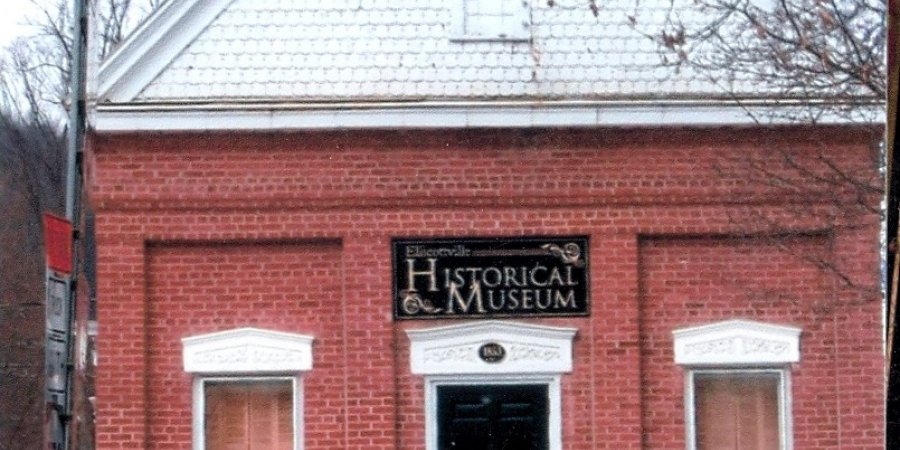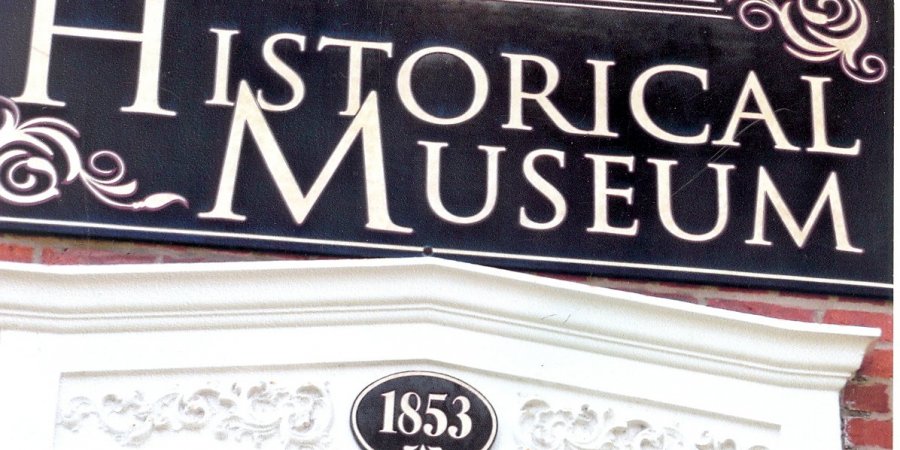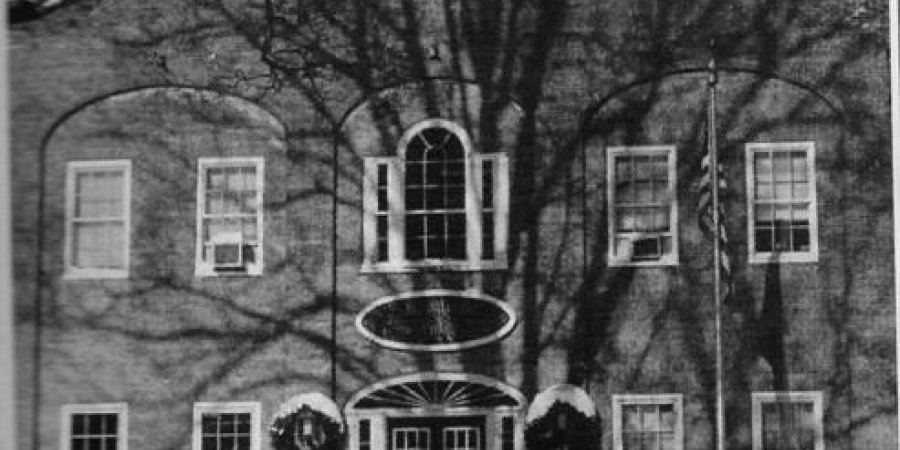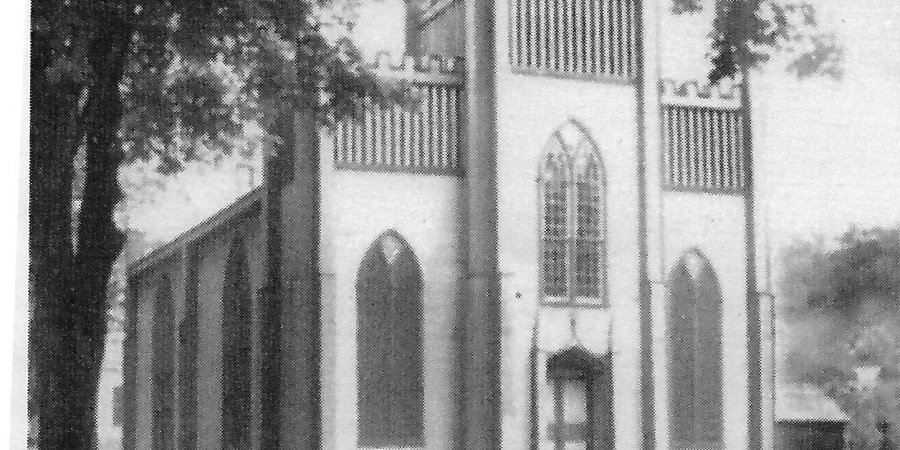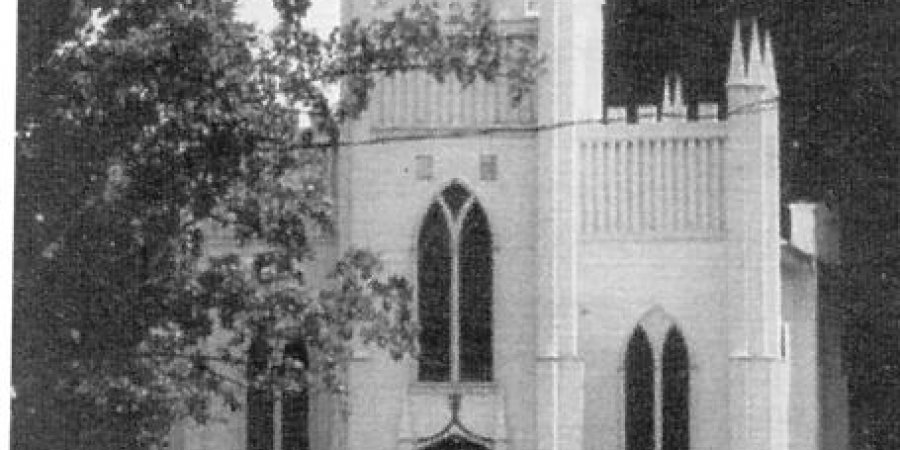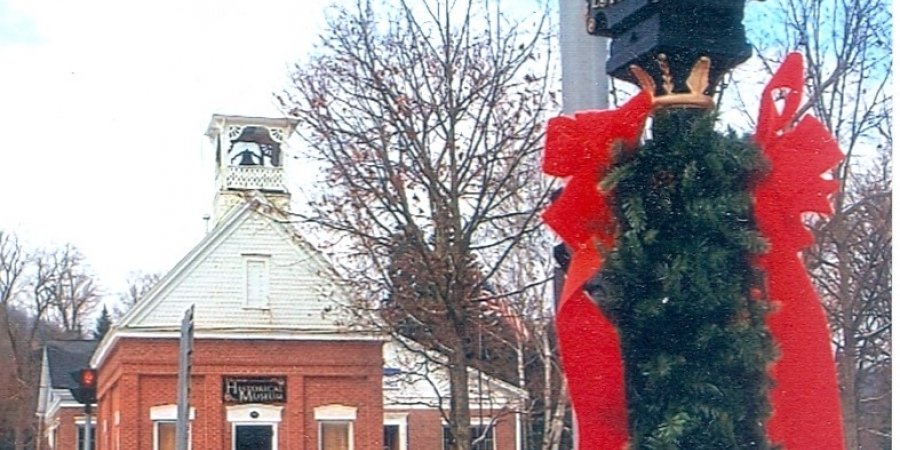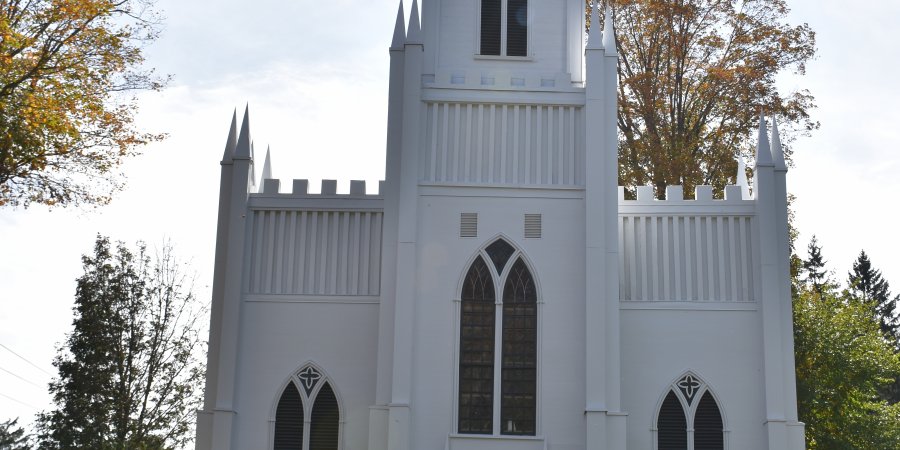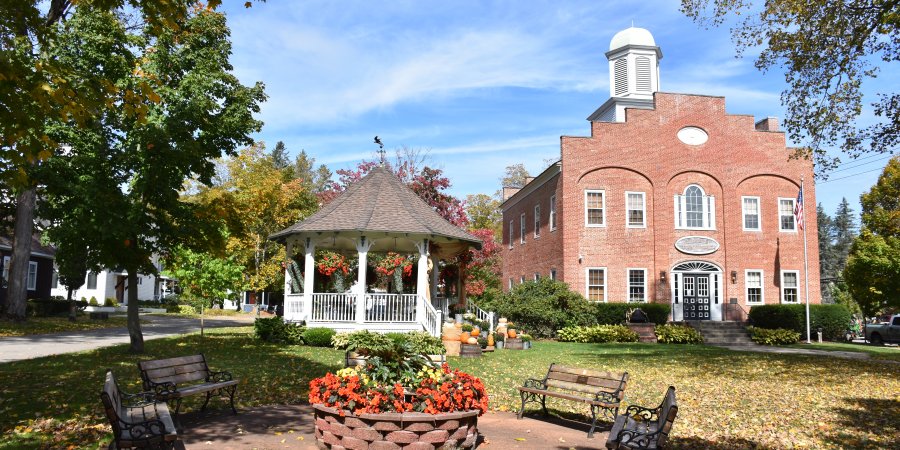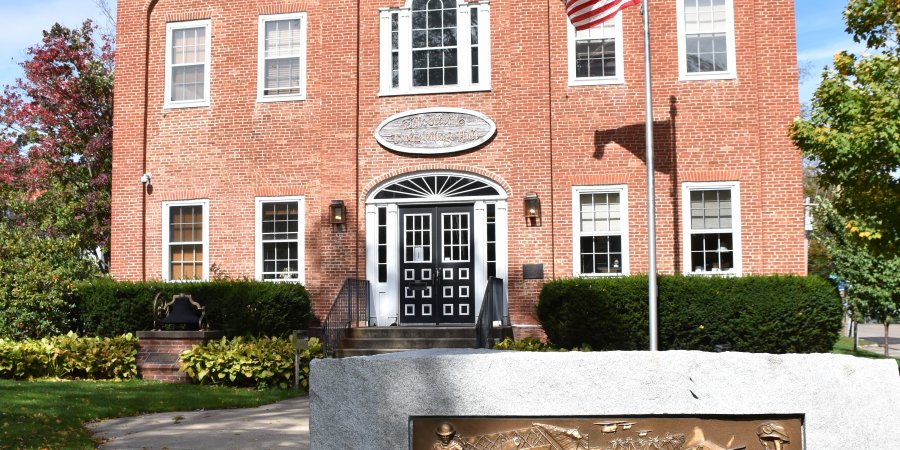Ellicottville was named in honor of Joseph Ellicott who was in charge of the survey of the Holland Land Compnay Lands in Western New York. Ellicott became its General Agent for the sale of these lands.
The Holland Land Company opened an office in Ellicottville in 1818. One of the surveyors laid out the village (lots, streets, and village square) for the future village and to allow for growth, something often lacking in villages that expanded without plans. The public square was divided into quarters. The Holland Land Company conveyed two lots to the county for county buildings (the Court House and the Clerk's Office), and one to the school district, and the other to the first church to build a church building.
The Court House was completed in 1820. In 1829 the court house and jail, which was built of logs, was destroyed by fire. The new court house built in 1829 was constructed of brick and still stands. In 1969 the distinquished old building had a fire that burned the interior and its cupola. With the efforts of the citizens of Ellicottville, funds were raised from several sources and the picturesque old court house was restored. Today it is on the National Register of Historic Places. With no railroad in Ellicottville the county seat was moved to Little Valley in 1868. The courthouse was purchased by the town to use as the Town Hall. Currently it serves as the Town and Village Hall.
The first school built in the village was completed about 1824. It had two stories. The lower section was used for a district school and the upper for a select school where a Female Seminary opened in 1835. A controversy developed that split the school district in two. One faction built a schoolhouse on the corner of Elizabeth and Adams Streets. The other built a small building on the north side of Washington Street, near the Mill Street intersection. The old school was purchased by Nicholas Deveraux, who moved and converted it into a Catholic Chapel for the Catholic Church. It was later occupied as a tin shop, a boot and shoe repair shop, farm machinery and hardware. The Harness Shop Restaurant, and currently Madigans. With a growing school population, the school district reunited and in 1851, a beautiful Greek revival style schoolhouse was built on the public square. The wooden structure served as a school until 1887 when larger quarters were needed. It was moved toward the present M & T Bank where classes continued until the new building was completed. In 1887, the wooden structure was moved to the present site of Fitzpatrick & Weller on Mill Street, and converted into Bartlett's Grist Mill, where it burned in May 19, 1893. The brick structure was erected in 1887 as the high school on the square.
The Village of Ellicottville was incorporated in 1837, the same year that St. John's Episcopal Church was being built on the church lot of the public squared. It was the first church of that denominationin the county.
Note: The Ellicottville Historic District was placed on the National Register of Historic Places in 1991.
Information contributed by Mary Elizabeth Dunbar, Town of Ellicottville Historian

